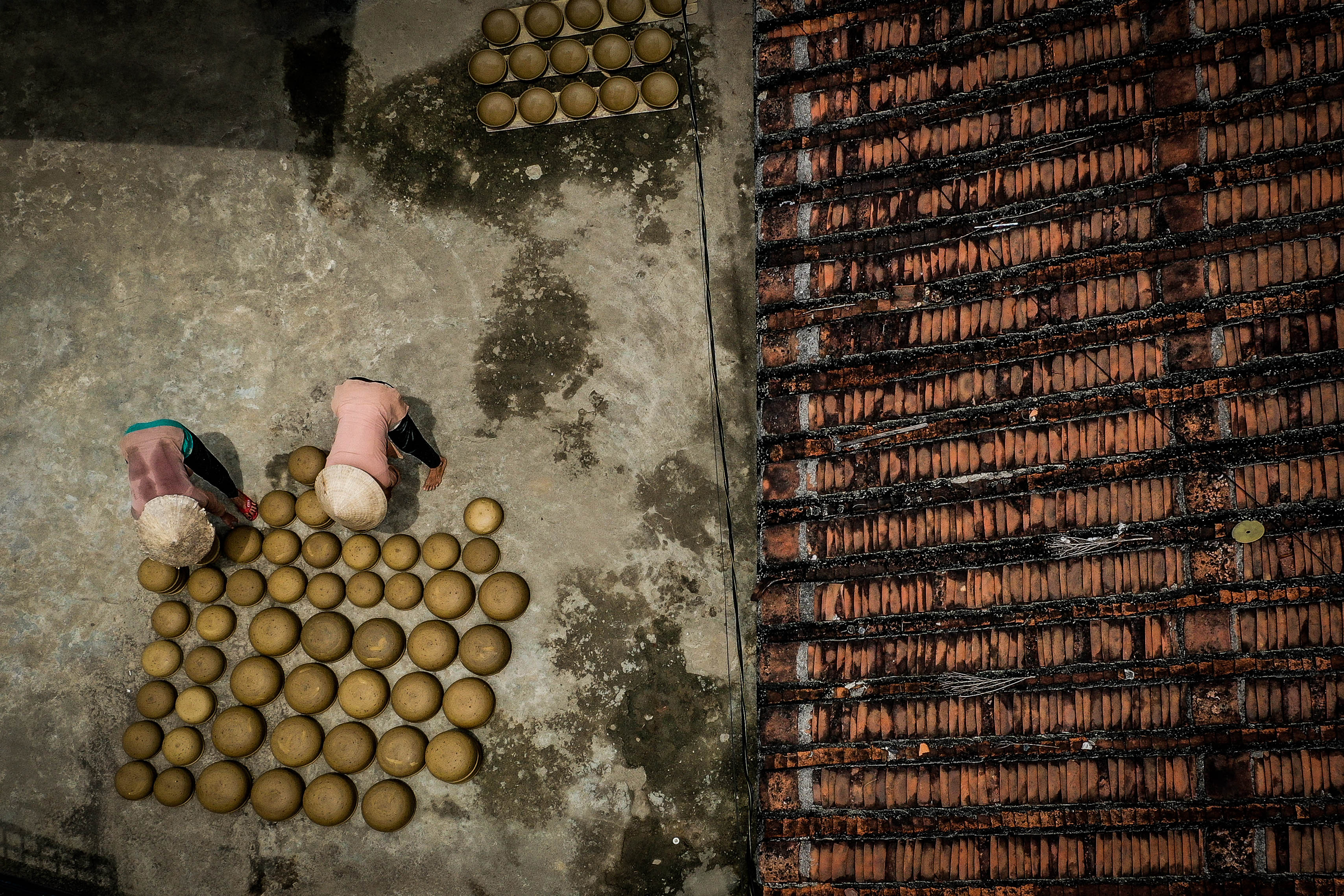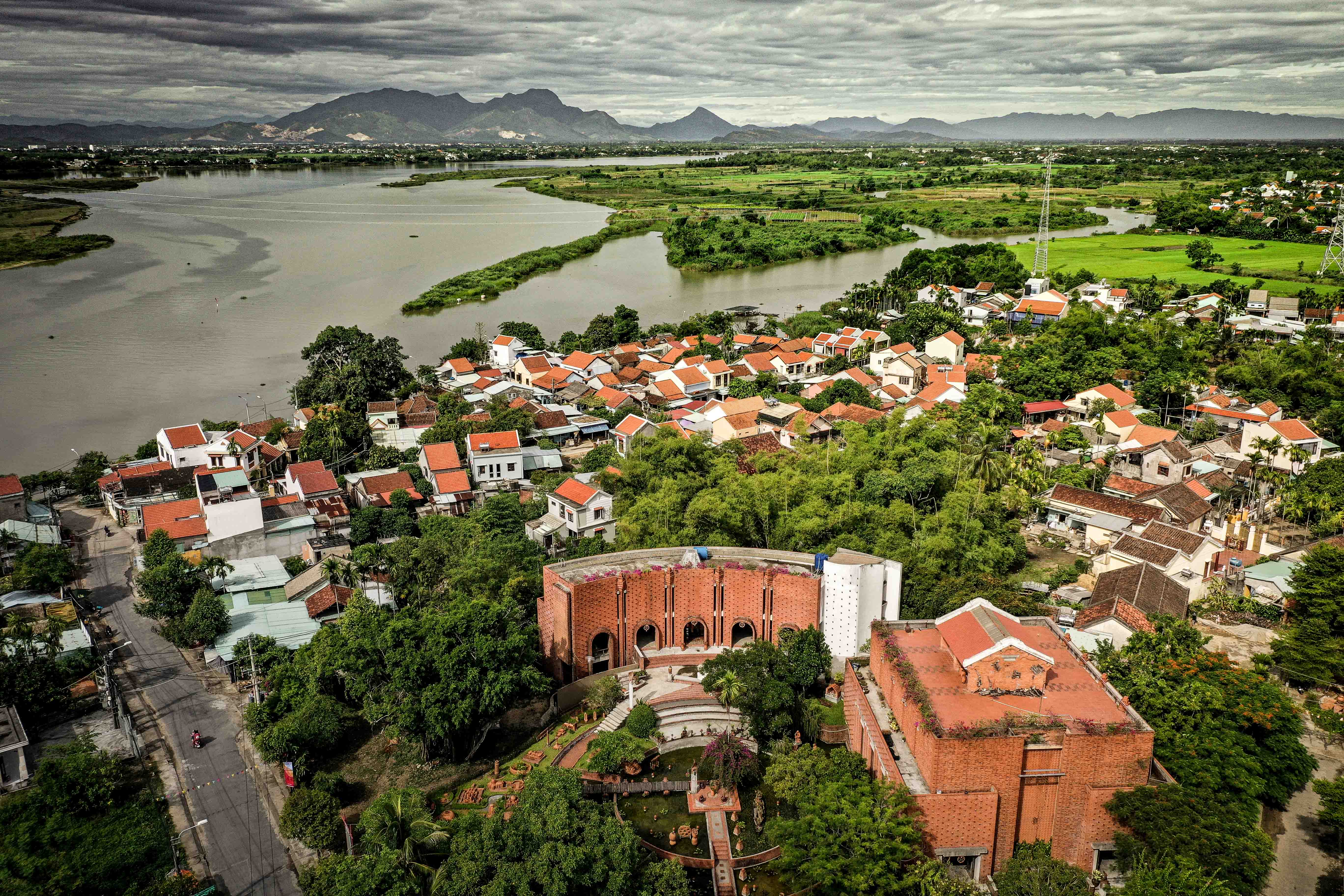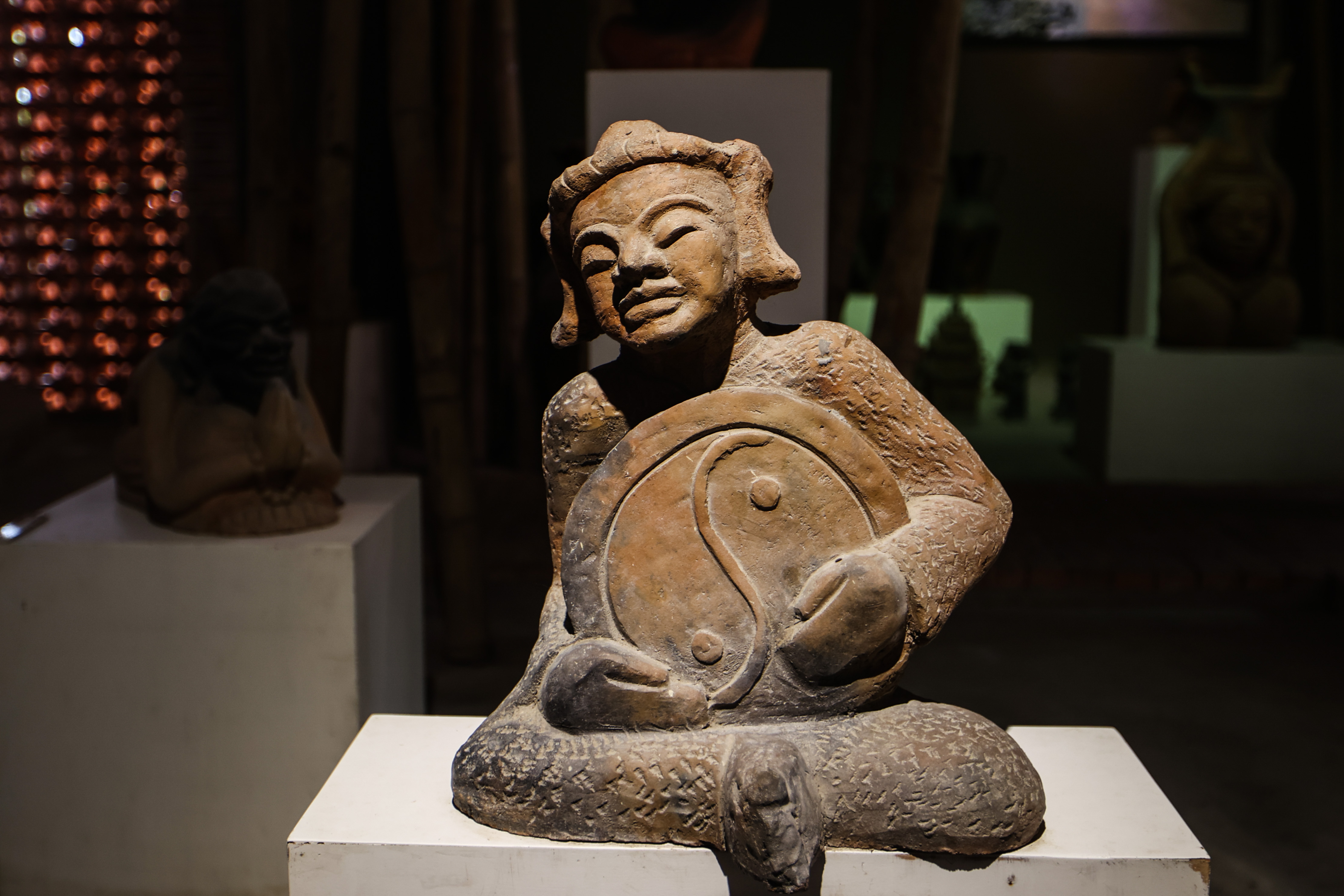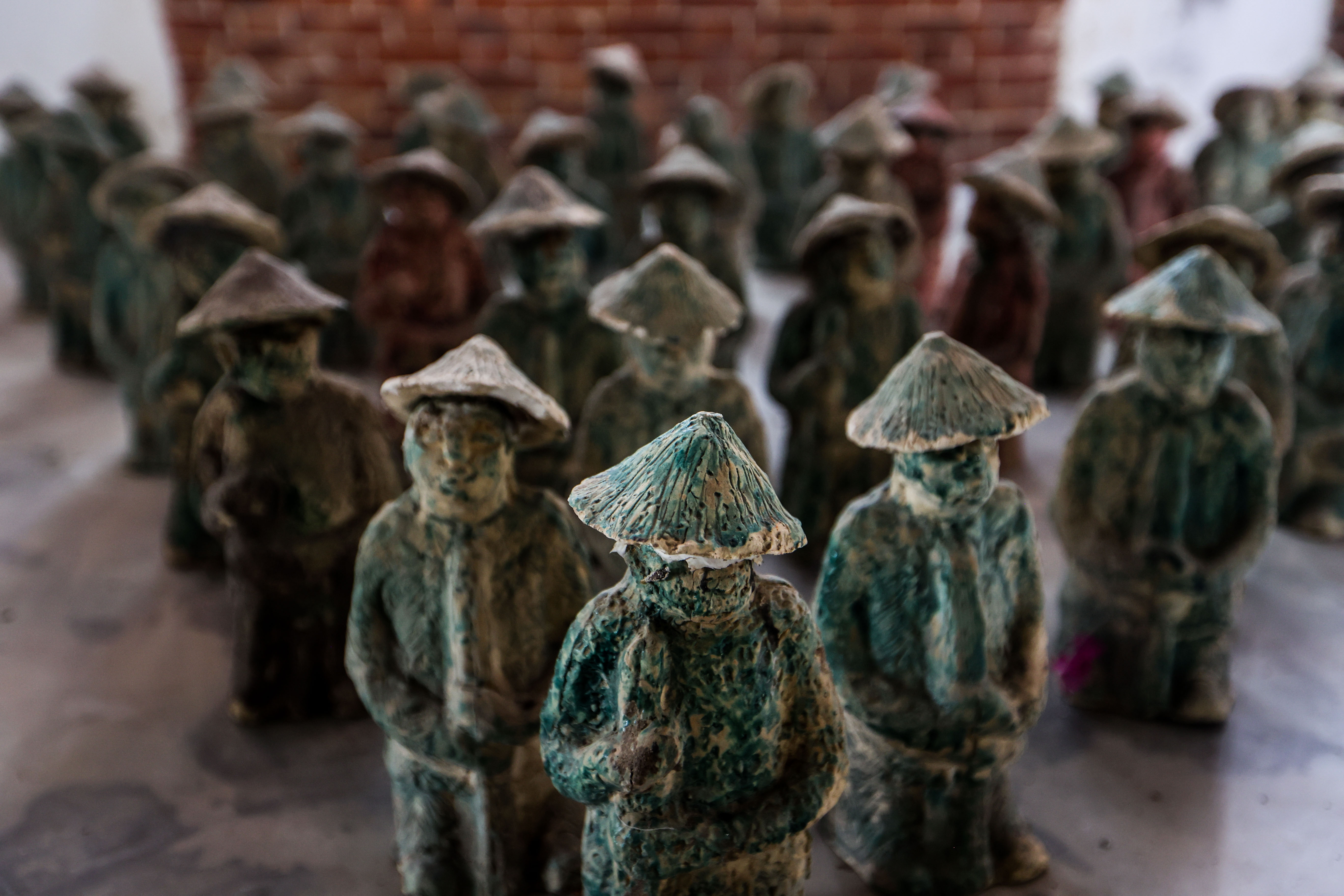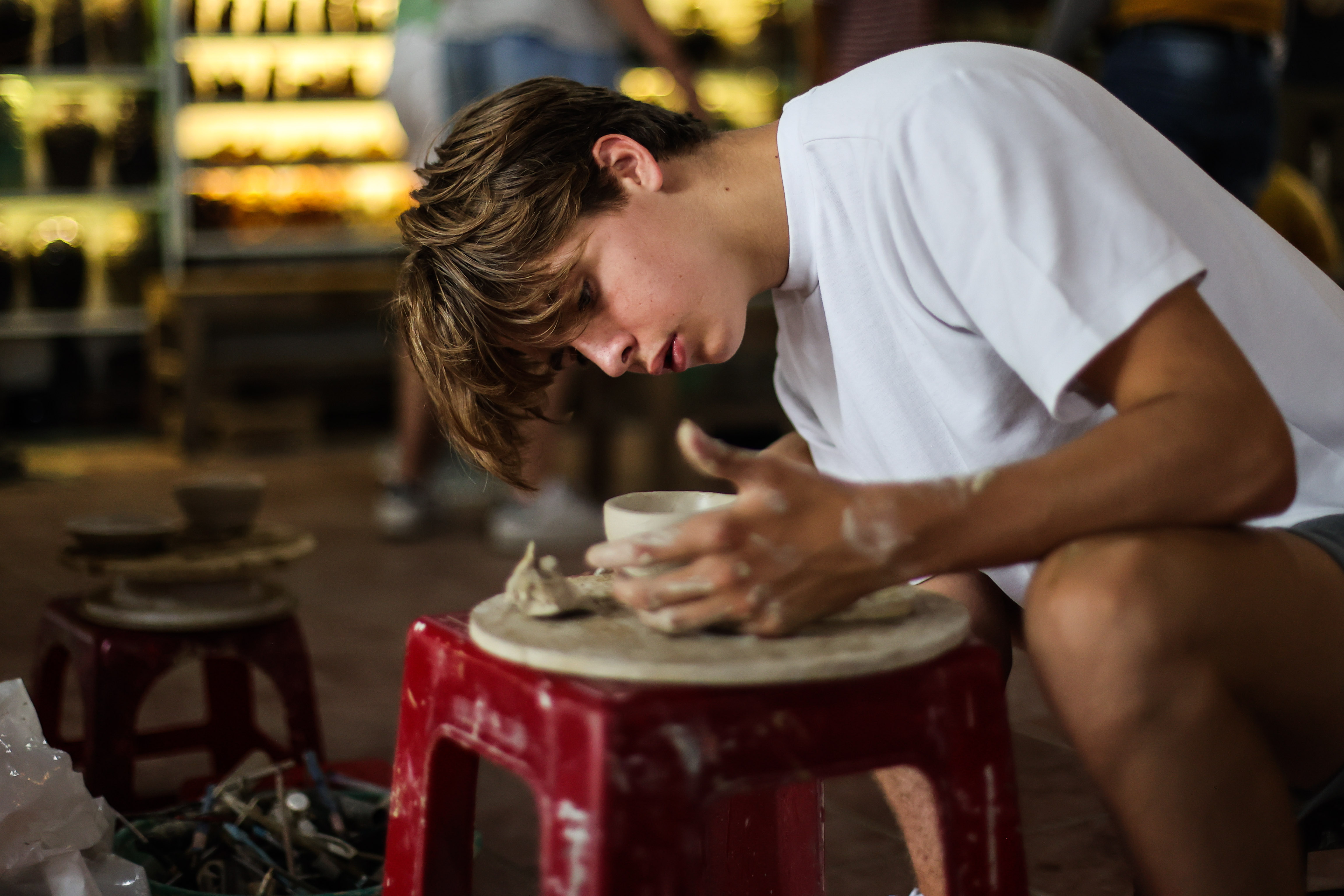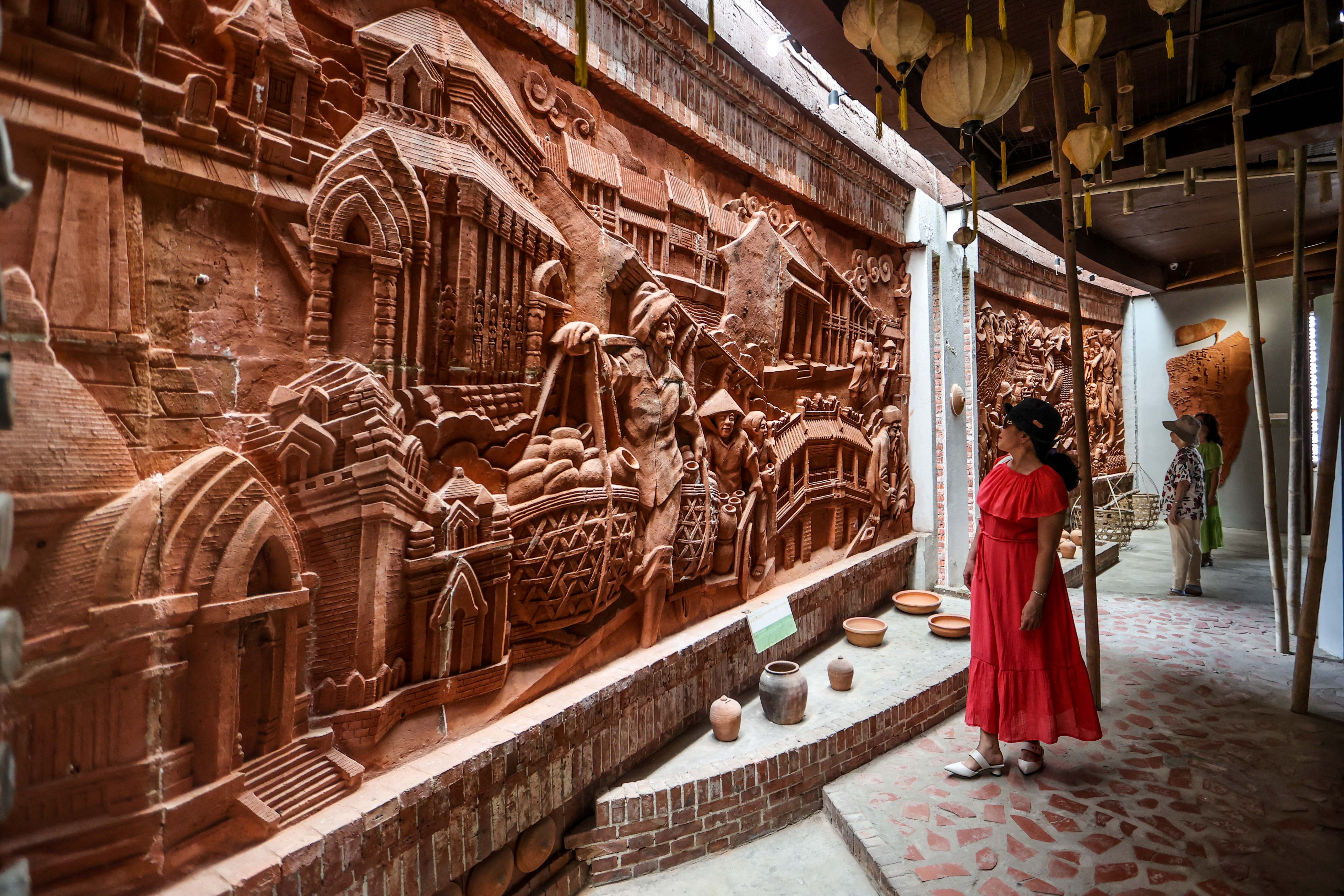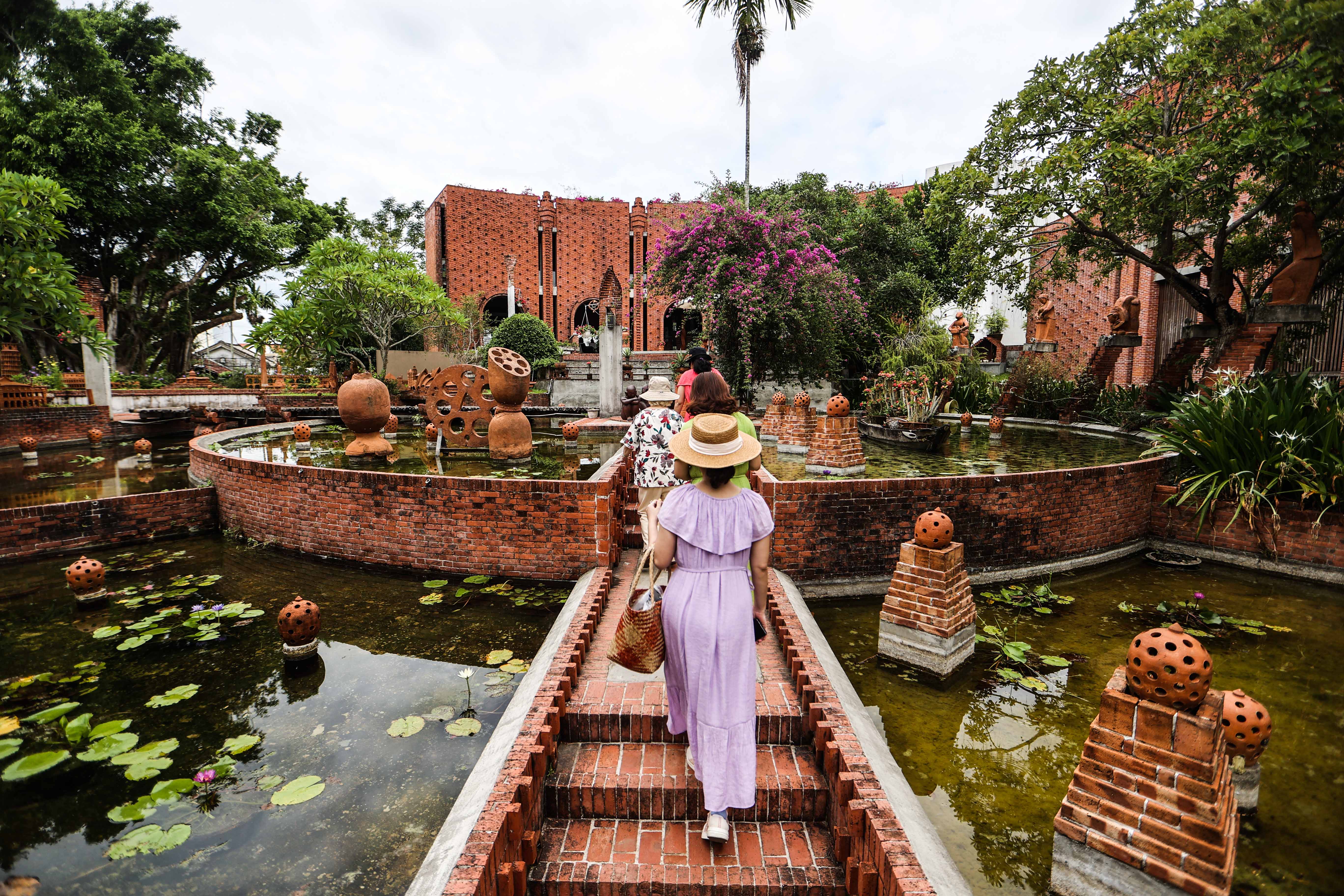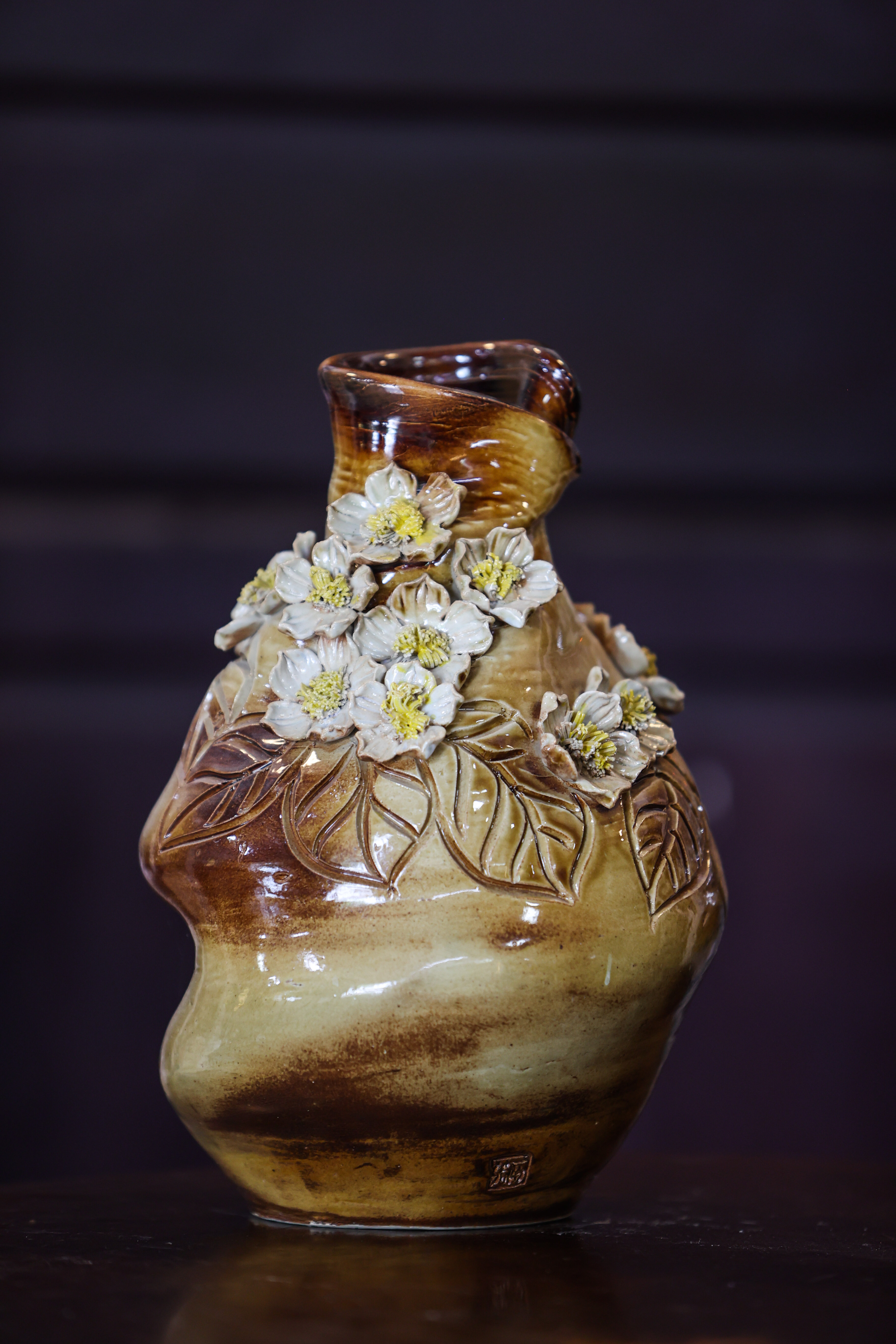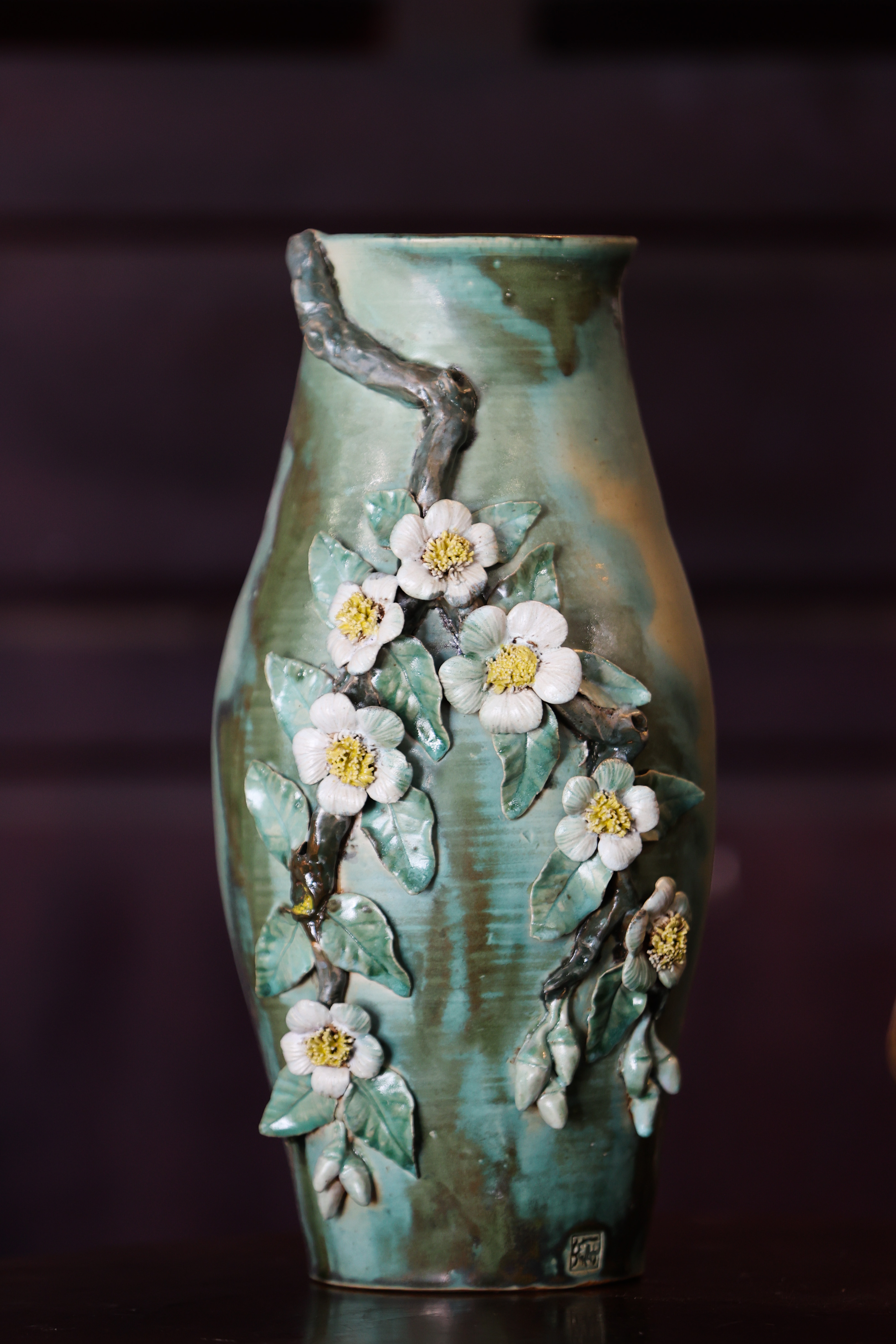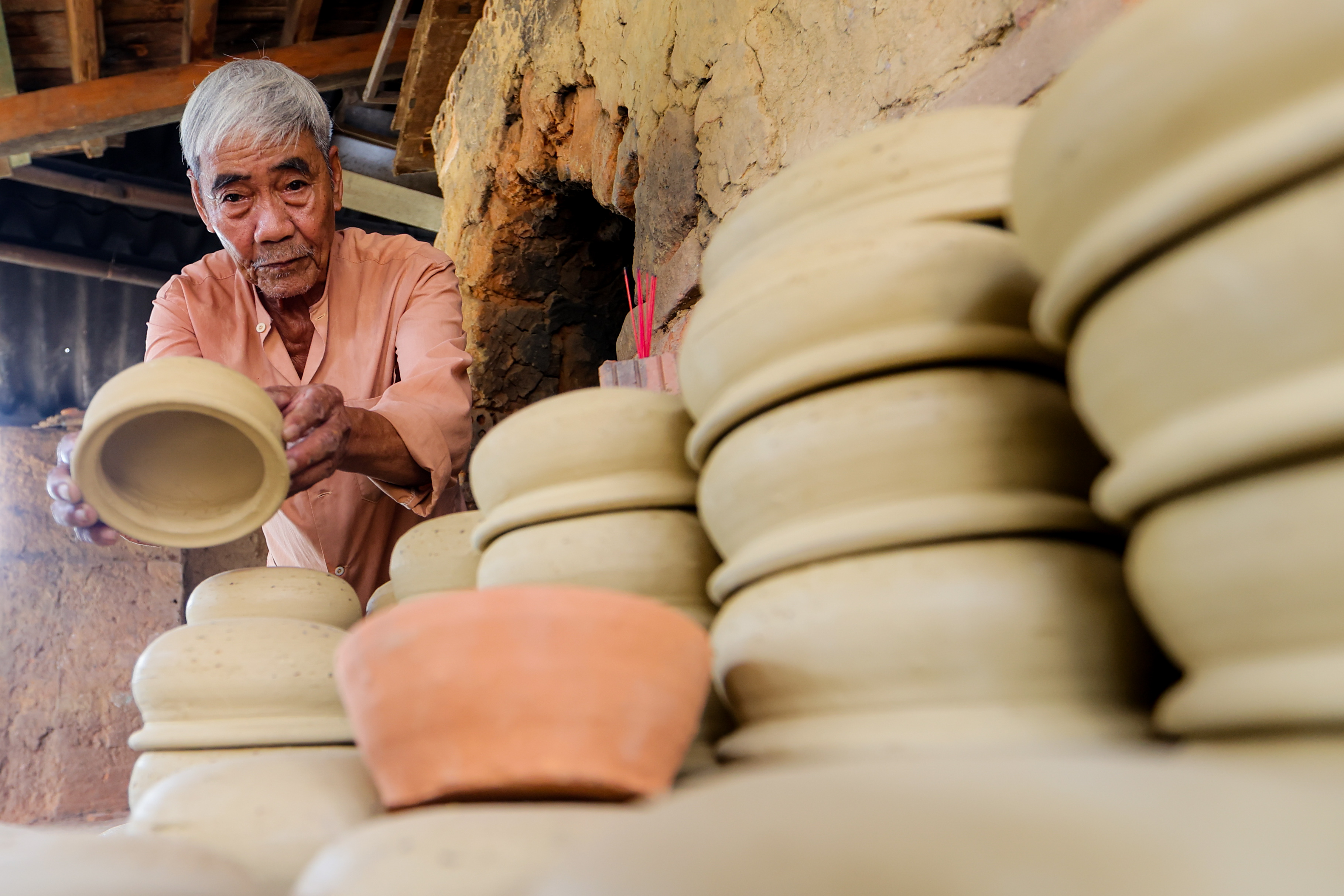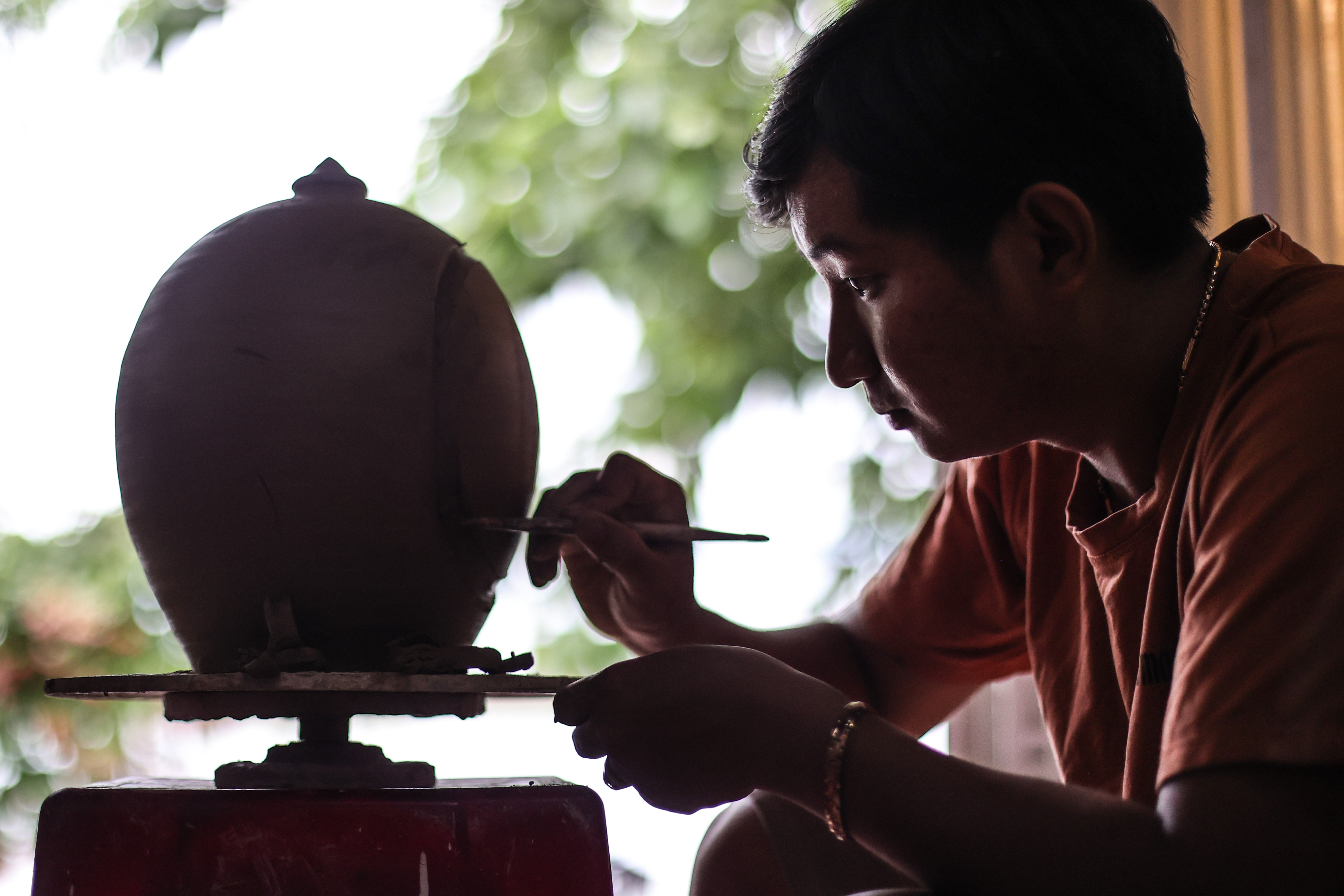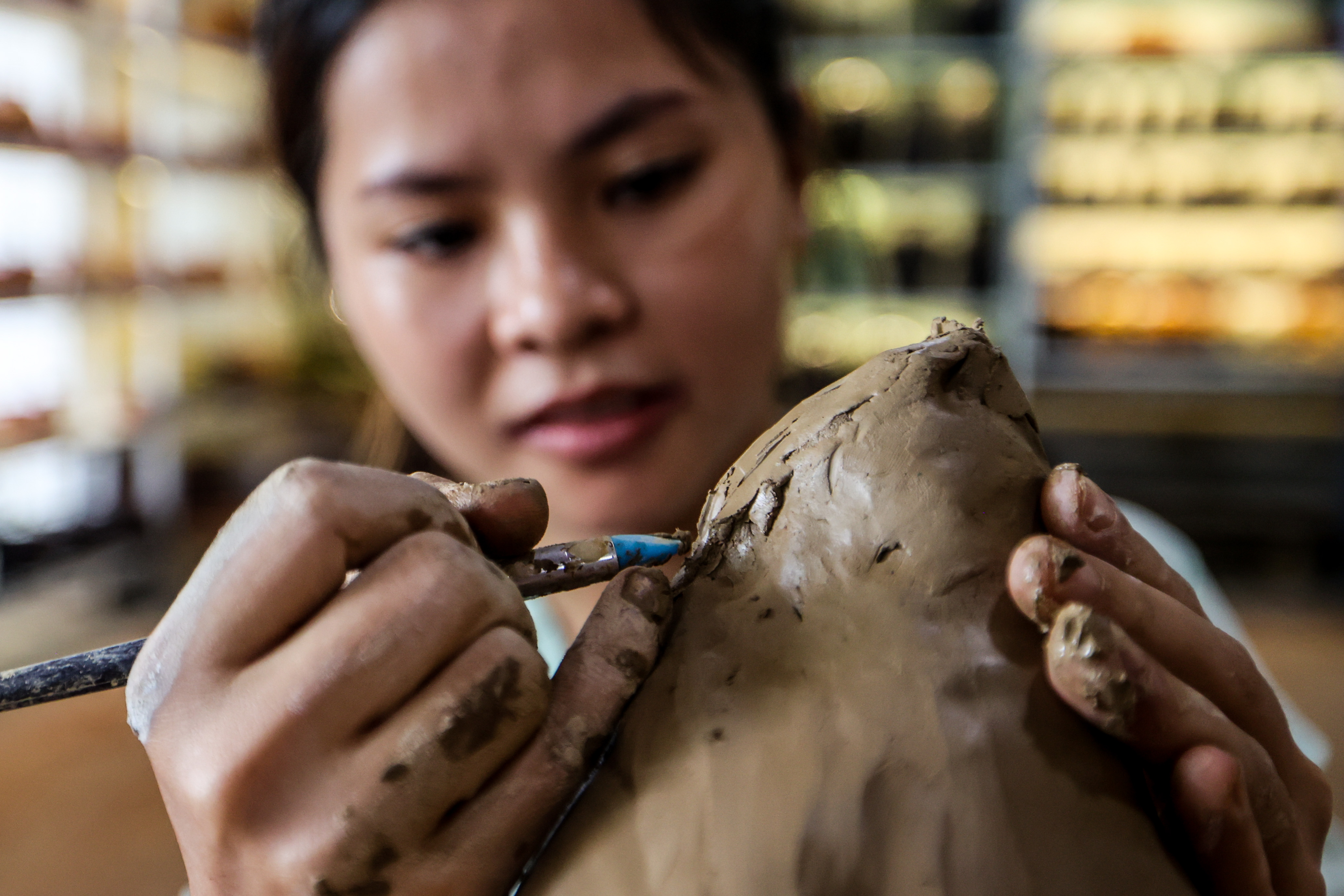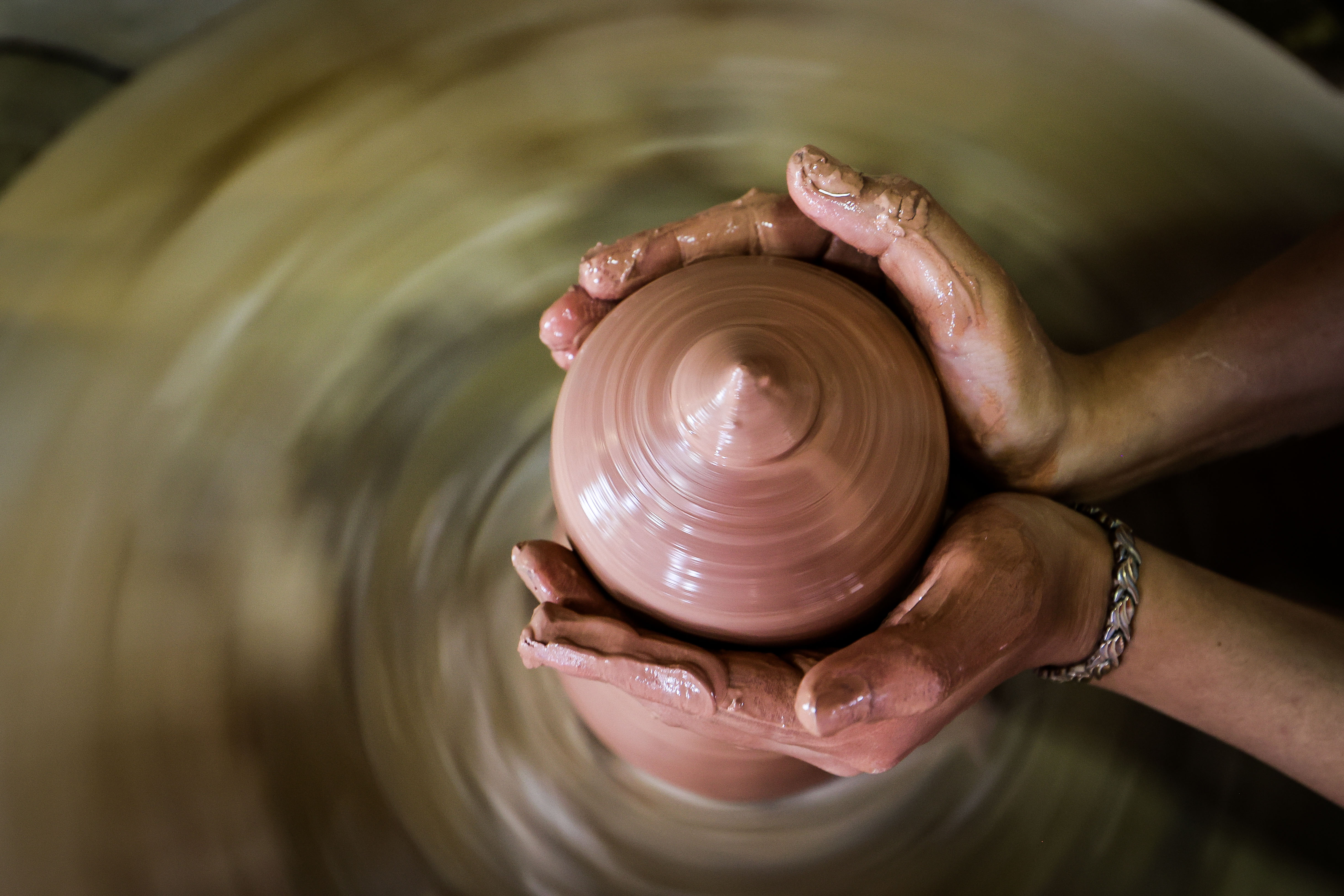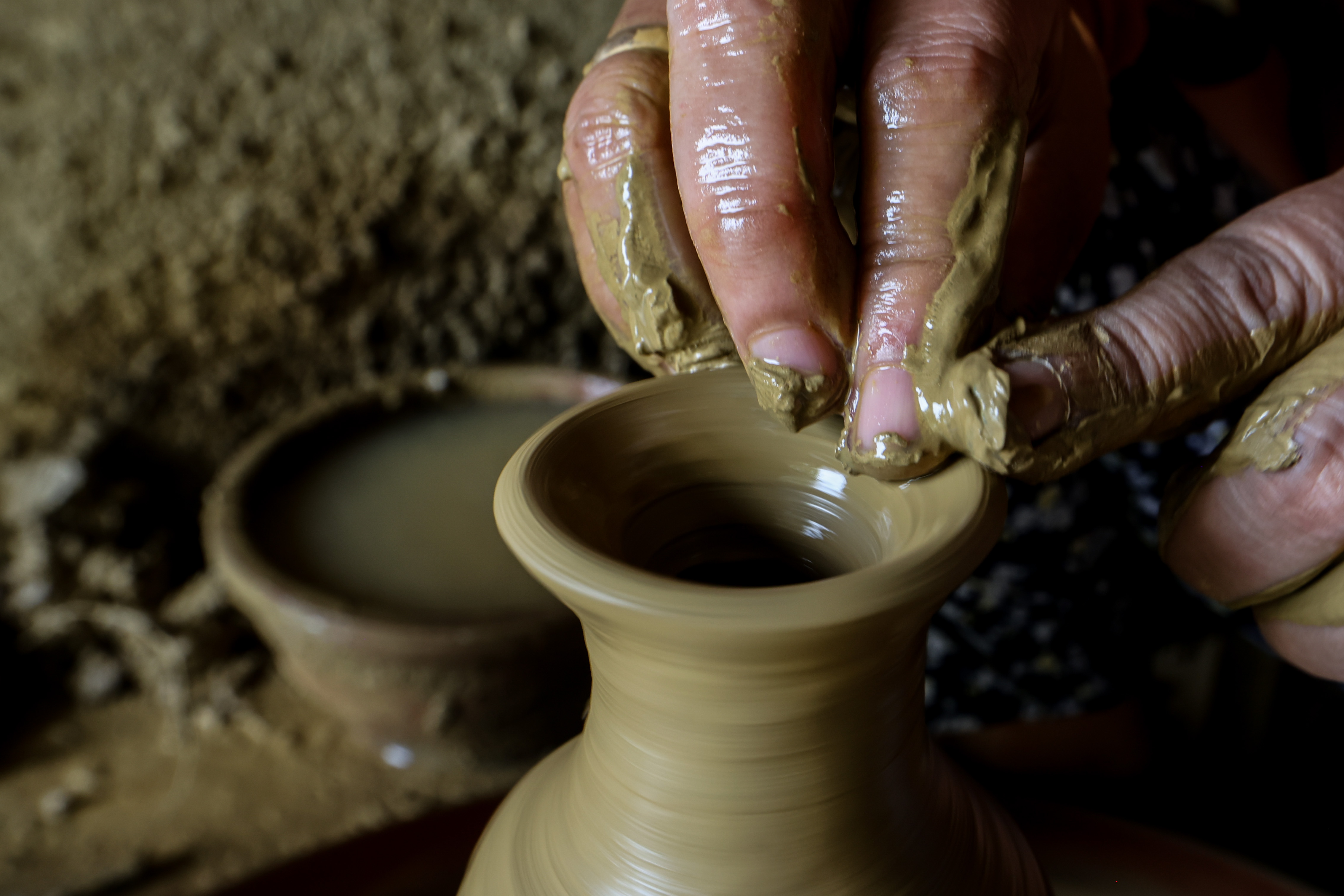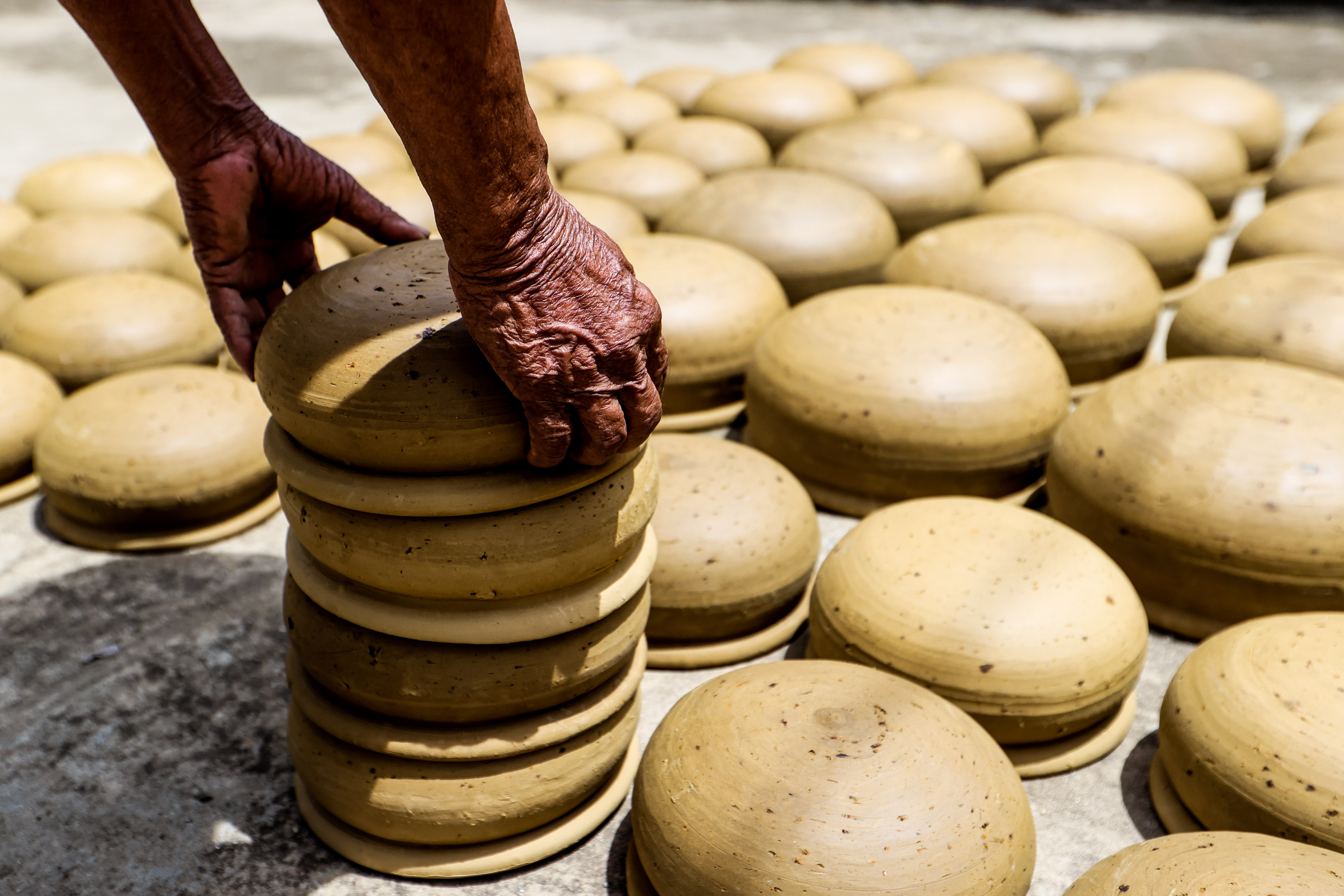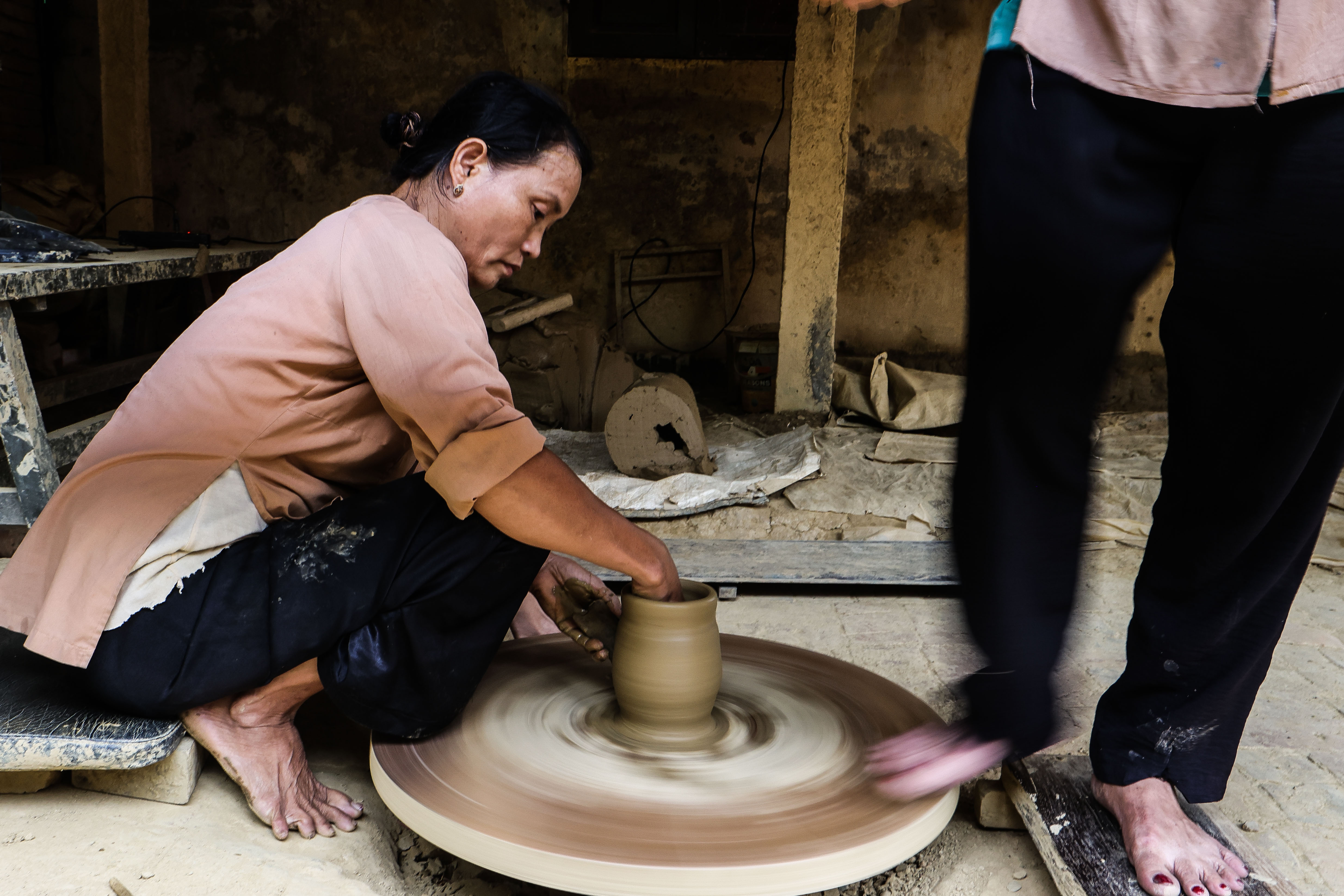Locals in Quang Nam Province, central Vietnam have long called the Thu Bon River 'Mother River' thanks to its role in nurturing the dozens of well-known traditional craft villages that line its shores.
These villages, including Nong Son Agarwood Villages, Tam Tang Cloth Weaving Village, and Thanh Ha Pottery Village, are a remnant of the region’s once bustling handicraft scene.
Perhaps the most famous craft village in the area is Thanh Ha Pottery Village in Thanh Ha Ward, Hoi An, which recently celebrated the Thanh Ha pottery profession commemoration on the 10th day of the seventh lunar month.
|
|
| Thanh Ha pottery profession commemoration is celebrated on the 10th day of the seventh lunar month. Photo: Nguyen Khanh / Tuoi Tre |
This annual traditional ceremony, despite being just one of many annual festivals in the region, is such an important event to local potters that Thanh Ha natives will find a way to make it home for the ceremony no matter where they have moved to.
At this year’s ceremony the pottery village flaunted its most recent achievement -- the Thanh Ha pottery profession being awarded the 'National Intangible Cultural Heritage' by the Ministry of Culture, Sports, and Tourism.
According to Thanh Ha Ward vice-chairman Truong Huong, Thanh Ha’s history is directly connected to that of Hoi An, nearly mimicking its ups and downs.
Notably, once market economies in the region began to take a foothold, the pottery village seemed to become an afterthought, and nearly collapsed.
|
|
| A bird’s-eye view of Thanh Ha Pottery Village in Hoi An City, Vietnam. Photo: Nguyen Khanh / Tuoi Tre |
A 500-year-old craft village with ups and downs
Historical documents put Thanh Ha Pottery Village at about 500 years old. For centuries, artisans in the village primarily made daily-use products such as earthen pots and vases.
That changed in the 1980s when products made from aluminum, iron, and plastic began choking the growth of the consumer ceramic market.
Unable to compete, the pottery village gradually switched to producing bricks and double roof tiles in the years before 2000.
Though these products did not generate significant incomes, they did help local villagers make ends meet and continue to carry on with traditional pottery making, as they had done for centuries.
Disaster almost befell the city in 2001 when UNESCO added Hoi An to its list of world cultural heritage sites and provincial authorities became determined to convert Hoi An into a green tourism city.
As brick making is not necessarily environmentally friendly, local officials felt serious changes needed to be made if the craft village was to sit so close to Hoi An Ancient Town.
Meanwhile, Thanh Ha Pottery Village, despite being small in scale, plays an important role in in the ward’s culture and heritage.
The ward is home to around 15,000 residents, most of whom are farmers and service providers.
|
|
| A pottery statue on display at Thanh Ha Pottery Park in Thanh Ha Pottery Village, Hoi An City, Quang Nam Province, Vietnam. Photo: Nguyen Khanh / Tuoi Tre |
|
|
| Pottery statues on display at Thanh Ha Pottery Park in Thanh Ha Pottery Village, Hoi An City, Quang Nam Province, Vietnam. Photo: Nguyen Khanh / Tuoi Tre |
In order to preserve the craft pottery village, Thanh Ha Ward authorities began working with local business and training programs to better understand the craft village and to upskill its potters.
The outcome of this initiative was that a set of criteria for the pottery village was put forward for maintaining the village and behavioral principles were created for the residents.
As a result, the village ballooned in popularity and became one of Hoi An’s top tourist attractions, with over 650,000 visitors and VND25 billion (US$1 million) in entrance ticket sales in 2019, according to data from the Hoi An Center for Culture, Sports, Radio, and Television.
|
|
| A foreign tourist tries to make a pottery product while visiting Thanh Ha Pottery Village in Thanh Ha Ward, Hoi An City, Quang Nam Province, Vietnam. Photo: Nguyen Khanh / Tuoi Tre |
|
|
| Tourists visit Thanh Ha Pottery Park in Thanh Ha Pottery Village, Hoi An City, Quang Nam Province, Vietnam. Photo: Nguyen Khanh / Tuoi Tre |
|
|
| Tourists visit Thanh Ha Pottery Park in Thanh Ha Pottery Village, Hoi An City, Quang Nam Province, Vietnam. Photo: Nguyen Khanh / Tuoi Tre |
According to Nguyen Van Nhat, chairman of Thanh Ha Ward People's Committee, part of the ticket revenue goes to preserving the pottery profession and supporting local artisans.
Thanh Ha’s true turning point was in 2015. Prior to that year, the number of pottery-making households in the village had dwindled to just eight but, as local tourism began to thrive and visitors from all over the world started flocking to Hoi An, the pottery village was incorporated into Hoi An’s tourism promotion plan.
As a result, pollution-causing brick kilns were eliminated to make way for more environment-friendly electric ovens.
Artisans were taught English and asked to participate in tourism-related training courses to upskill themselves.
Local facilities were prepared to both continue making pottery and showcase the craft to visitors.
|
|
| Nguyen Van Nhat, chairman of Thanh Ha Ward People's Committee. Photo: Nguyen Khanh / Tuoi Tre |
Fate changed
Pham Thi My Dung, owner of the Son Thuy pottery-making facility, shared that her husband, Nguyen Viet Son, chose pottery-making as his career to honor the generations of potters in his family that came before him.
Tourism has helped change the fate of the village, Dung said.
“We made changes. We had to adapt and embrace new things to produce both traditional and modern pottery items. Tourism taught us many things, especially how to make appropriate changes to our craft village,” she said.
|
|
| The family who owns the famous Son Thuy pottery-making facility in Thanh Ha Pottery Village. Photo: Nguyen Khanh / Tuoi Tre |
|
|
| A floral pottery vase made at the Son Thuy pottery-making facility. Photo: Nguyen Khanh / Tuoi Tre |
|
|
| A floral pottery vase made at the Son Thuy pottery-making facility. Photo: Nguyen Khanh / Tuoi Tre |
From being nearly pushed to the brink of oblivion, Thanh Ha Pottery Village has made a dramatic comeback.
“Thanh Ha has a strong inner strength that helps us go through all events,” said Nguyen Van Tu, secretary of Thanh Ha Ward Party Committee.
“We’ve been trying to find the best mechanisms to support people in difficult days.
"Our point of view is that what is traditional without causing pollution should be kept.”
|
|
| Nguyen Van Tu, secretary of the Thanh Ha Ward Party Committee. Photo: Nguyen Khanh / Tuoi Tre |
The village is now home to 32 pottery-making households. It has also drawn back dozens of residents who had left the village for work or education.
Artisan Nguyen Ngu, 85, and his wife and their two children are potters. His facility mainly makes traditional pottery products, such as earthen pots and vases.
|
|
| Artisan Nguyen Ngu, 85, is seen working on pottery products in Thanh Ha Pottery Village, Thanh Ha Ward, Hoi An City, Quang Nam Province, Vietnam. Photo: Nguyen Khanh / Tuoi Tre |
Despite only offering a modest number of products, Ngu said he is happy that the craft village remains operational.
Besides the elderly artisans in the village, there are many young people who now follow in their pottery-making footsteps.
Nguyen Viet Lam, 24, Pham Thi My Dung’s oldest son, said he learned to make pottery from his parents when he was 13.
After graduating from high school, Lam decided to stay in the village to follow in his parents’ footsteps.
As a young person who is able to keep updated on the newest trends, Lam now sells his family’s pottery on various social media and e-commerce platforms.
|
|
| Nguyen Viet Lam, 24, followed in his family’s footsteps to become a pottery maker. Photo: Nguyen Khanh / Tuoi Tre |
|
|
| A young artisan in Thanh Ha Pottery Village, Thanh Ha Ward, Hoi An City, Quang Nam Province, Vietnam. Photo: Nguyen Khanh / Tuoi Tre |
|
|
| A pottery item is in the making in Thanh Ha Pottery Village, Thanh Ha Ward, Hoi An City, Quang Nam Province, Vietnam. Photo: Nguyen Khanh / Tuoi Tre |
|
|
| A pottery vase is in the making in Thanh Ha Pottery Village, Thanh Ha Ward, Hoi An City, Quang Nam Province, Vietnam. Photo: Nguyen Khanh / Tuoi Tre |
|
|
| Pottery is in the making in Thanh Ha Pottery Village, Thanh Ha Ward, Hoi An City, Quang Nam Province, Vietnam. Photo: Nguyen Khanh / Tuoi Tre |
|
|
| An artisan is working on a pottery vase in Thanh Ha Pottery Village, Quang Nam Province, Vietnam. Photo: Nguyen Khanh / Tuoi Tre |
Like us on Facebook or follow us on Twitter to get the latest news about Vietnam!



